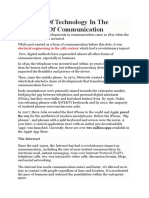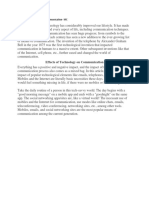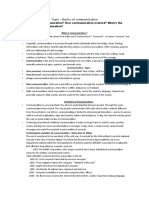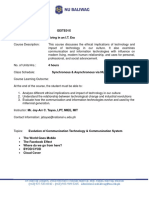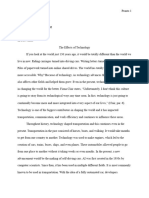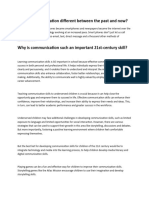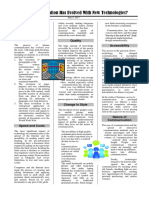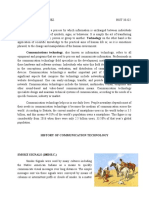0% found this document useful (0 votes)
13 views5 pagesInformation and Communication
The article discusses the evolution of communication technology, highlighting key developments from the electric telegraph to modern digital methods. It emphasizes the transformative impact of the internet, email, wearable technology, virtual reality, and the upcoming 5G network on how we interact and communicate. The author reflects on the rapid advancements and their implications for personal and business communication.
Uploaded by
loyig22333Copyright
© © All Rights Reserved
We take content rights seriously. If you suspect this is your content, claim it here.
Available Formats
Download as PDF, TXT or read online on Scribd
0% found this document useful (0 votes)
13 views5 pagesInformation and Communication
The article discusses the evolution of communication technology, highlighting key developments from the electric telegraph to modern digital methods. It emphasizes the transformative impact of the internet, email, wearable technology, virtual reality, and the upcoming 5G network on how we interact and communicate. The author reflects on the rapid advancements and their implications for personal and business communication.
Uploaded by
loyig22333Copyright
© © All Rights Reserved
We take content rights seriously. If you suspect this is your content, claim it here.
Available Formats
Download as PDF, TXT or read online on Scribd
/ 5


